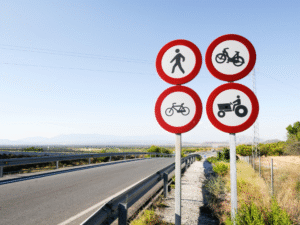Introduction to High-Traffic Event Management
Managing high-traffic events in a busy city like Sydney requires meticulous planning and execution. A well-designed traffic guidance scheme is essential for ensuring that attendees, road users, and workers remain safe during these large-scale events. AAA Traffic Control specialises in creating and implementing effective traffic management strategies, minimising congestion, and reducing risks associated with heavy vehicle and pedestrian movement.
High-traffic events such as concerts, sporting events, festivals, and community gatherings pose unique challenges. With multiple entry and exit points, unpredictable vehicle flows, and large pedestrian crowds, a coordinated approach is necessary to maintain order and safety. AAA Traffic Control leverages its experience and accredited personnel to ensure that every event runs smoothly and safely.

Planning and Implementation of Traffic Management
Conducting Site Assessments
The first step in managing traffic for high-traffic events is a thorough site assessment. AAA Traffic Control evaluates the location, identifies potential hazards, and analyses traffic patterns. By understanding these elements, the team can develop a tailored traffic guidance scheme that addresses both vehicular and pedestrian needs.
Designing Traffic Flow
Effective traffic flow design is crucial. AAA Traffic Control maps out routes for vehicles, designates pedestrian crossings, and plans emergency access routes. This ensures that traffic moves efficiently while maintaining safety standards. Signage, barriers, and road markings are strategically positioned to guide road users and prevent confusion.
Coordination with Authorities
Successful traffic management requires close collaboration with local authorities, police, and emergency services. AAA Traffic Control coordinates with these stakeholders to obtain permits, adhere to regulations, and ensure compliance with Australian road safety standards. This partnership enables rapid response to any unexpected situations, minimising disruptions and maintaining public safety.
On-the-Day Traffic Management
Deployment of Accredited Traffic Controllers
At the event, AAA Traffic Control deploys accredited traffic controllers to key points. These professionals are trained to manage vehicle queues, guide pedestrians, and respond to incidents effectively. Their presence ensures that the traffic guidance scheme is executed as planned and adjusted in real time as conditions change.
Use of Traffic Control Equipment
Proper equipment is vital for effective traffic management. AAA Traffic Control utilises cones, barriers, signs, and electronic devices to control and redirect traffic. The use of high-visibility gear and clear signage improves compliance and reduces the risk of accidents.
Continuous Monitoring and Communication
Throughout the event, constant monitoring of traffic conditions is essential. AAA Traffic Control employs communication systems to maintain contact between controllers, supervisors, and emergency services. This allows for quick decision-making and ensures that any issues are addressed promptly, keeping traffic moving safely.
Post-Event Evaluation
Once the event concludes, AAA Traffic Control undertakes a comprehensive post-event evaluation to ensure that every aspect of the traffic management plan is reviewed and optimised for future events. This process begins with a detailed analysis of traffic flow data collected throughout the event, including vehicle movement patterns, pedestrian interactions, and points where congestion or delays occurred. By examining this data, the team can pinpoint specific areas that may have required additional attention or adjustments, allowing them to identify potential bottlenecks and high-risk zones that could impact safety.
In addition to quantitative data analysis, AAA Traffic Control actively gathers qualitative feedback from event staff, accredited traffic controllers, local authorities, and even attendees when possible. This feedback provides valuable insights into how well the traffic guidance scheme functioned in practice, highlighting both successes and areas needing improvement. Challenges encountered, such as unexpected vehicle surges, non-compliance with signage, or communication breakdowns, are documented in detail. Understanding these issues helps the team develop targeted solutions and contingency strategies to address similar situations in future events.
The post-event evaluation also includes a thorough review of the deployed traffic control equipment and staffing arrangements. This ensures that resources were used effectively and that any gaps in coverage or equipment performance are addressed. Lessons learned from these reviews are systematically integrated into future traffic guidance schemes, enabling continuous refinement of planning, execution, and coordination processes. By taking a holistic approach to post-event assessment, AAA Traffic Control not only enhances operational efficiency but also reinforces the safety and confidence of both event organisers and the general public for upcoming high-traffic events.
In Summary
Managing high-traffic events in Sydney demands expert planning, highly skilled personnel, and the implementation of effective traffic guidance schemes. AAA Traffic Control delivers comprehensive solutions that prioritise safety, operational efficiency, and strict compliance with regulations. From initial site assessment and meticulous planning to on-the-day management and thorough post-event evaluation, their structured approach ensures seamless operations for both road users and event attendees. By collaborating with professionals like AAA Traffic Control, event organisers can concentrate on delivering a successful event, confident that traffic management is being handled by experienced experts.
This proactive approach not only minimises risks and potential disruptions but also significantly enhances the overall experience for the local community. Well-managed traffic flow reduces congestion, improves accessibility, and reassures attendees that safety is a top priority. It highlights the critical role of professional traffic management in high-pressure environments and demonstrates how thoughtful planning and execution can make a measurable difference in both safety outcomes and public satisfaction.

